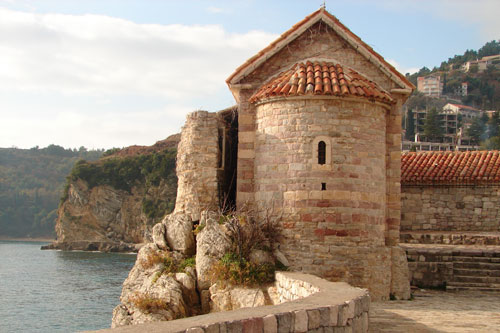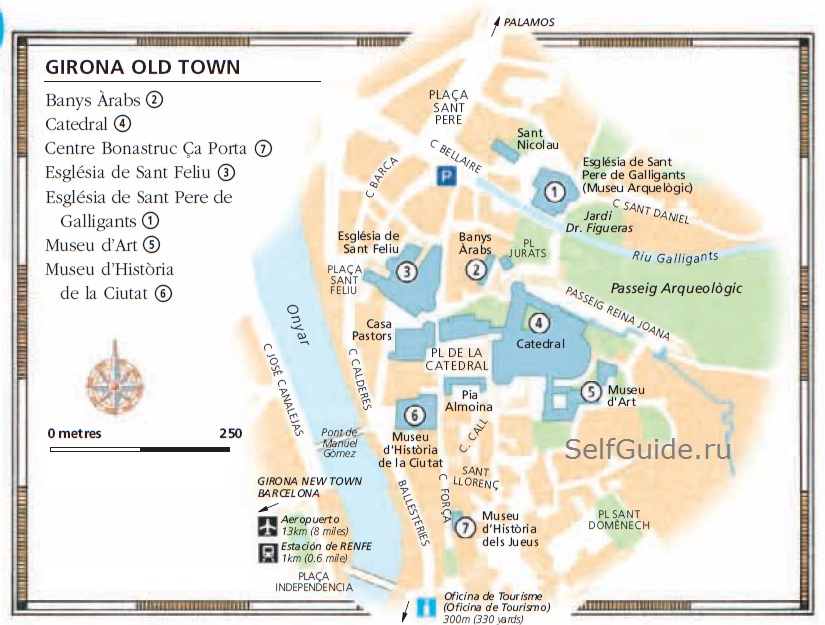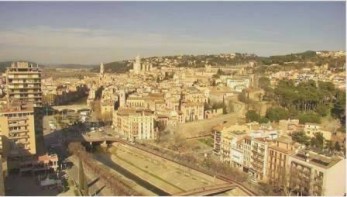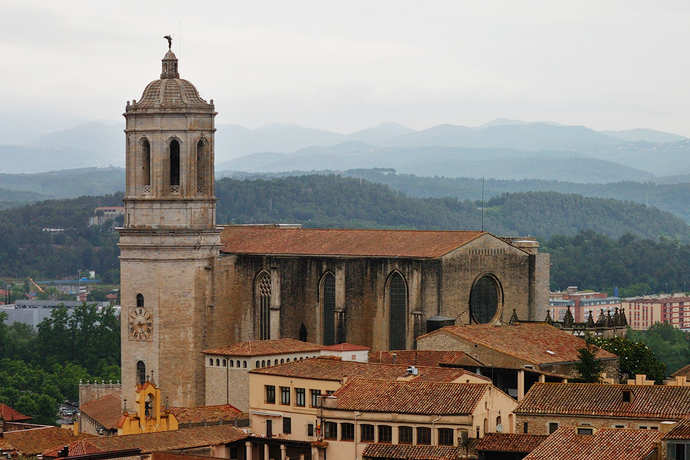Panorama of the Jaffa Gate. Virtual tour of Jaffa Gate. Sights, map, photo, video. Jaffa Gate - The main entrance to the historic center of Jerusalem Jaffa Gate
Jaffa Gate (Hebrew שער יפו, \u200b\u200bShaar Yafo; Arabic. باب الخليل, Bab el-Khalil, Friend's Gate, Hebron Gate; also Arabic Bab Mihrab Daud, "David's Prayer Niche Gate"; also David Gate) - stone portal in the historic walls of the old city of Jerusalem. One of the eight open gates within the walls of the Old Town; are the main gateway to the Christian and Armenian quarters. They are located in the western part of the Old City at the most important intersection of the western road leading to Jaffa and the southern road leading to Bethlehem and Hebron. These two roads are still the central Jerusalem arteries. The only gates of the Old City, facing west, to the Mediterranean Sea; and also the only ones located at right angles to the wall. Such an arrangement could be chosen as a defensive measure in order to slow the progress of the attackers; or to orient the gate in the direction of the Jaffa road, along which pilgrims arrived at the end of their journey from the port of Jaffa. Like the stones used in the construction of all other parts of the walls of the Old Town, the stones of the Jaffa Gate are large, cut-out blocks of sand color. The height of the entrance is about 6 meters, and the wall rises another 6 meters above it.
Names
Both the Jaffa Gate and the Jaffa Road are named for the port of Jaffa on the Mediterranean coast, from which the prophet Jonah set off on his sea voyage and where pilgrims landed on their way to the Holy City. Modern Highway No. 1, starting from the western end of the Jaffa Road, is the completion of the same route to Tel Aviv-Jaffa. The Arabic name for the gate, Bab al-Khalil (Gate of the Friend), refers to Abraham, the beloved of God buried in Hebron. Since Abraham lived in Hebron, another name for the Jaffa Gate is Hebron Gate. Arabs also call this gate Bab Mihrab Daud (Gate of David's prayer niche), because King David is considered a prophet in Islam. The Crusaders, who rebuilt the stronghold nearby (south) of the Jaffa Gate, also built a gate behind the current location of the Jaffa Gate, naming them the “Gate of David” by the Tower of David.
Ottoman period
Construction
They were inaugurated in 1538 at the site of the gates of an earlier period, as part of the project to restore the walls of the Old City by order of the ruler of the Ottoman Empire, Suleiman the Magnificent. Immediately inside the gate, behind the iron trellis on the left, there are two graves. It is believed that these are the graves of two architects to whom Suleiman commissioned the construction of the walls of the Old City. According to legend, when Suleiman saw that the architects left Mount Zion and the tomb of King David outside the territory enclosed by the walls - he ordered them to be killed. However, out of respect for their impressive accomplishments, he buried them inside the walls near the Jaffa Gate.
The main gate through which you can get into the Christian and Armenian quarters of the Old part,. This is perhaps the busiest gate in the city, as a huge stream of transport and pedestrians daily runs through them. Jaffa Gate is one of the versions of our site.
The passage through the Jaffa Gate takes place through a large opening in the wall. And by the way, this is the only gate in the city that faces west. They were built in the 16th century by order of the most influential Ottoman ruler Suleiman I. In those days they were called the David Gate. A breach in the wall appeared much later, during the visit of the German Kaiser at the end of the 19th century. It is through this breach that the old part of the city is connected with the new.
Today, many tourists visiting Jerusalem want to visit this attraction, as it is surrounded by many memorable places. So, for example, crossing the square outside the Jaffa Gate, you can get into the Christian quarter, where there are about 40 shrines. Also, next to the gate is the famous Tower of David.
It is not difficult to find the Jaffa Gate in Jerusalem, as Jaffa Street is one of the central streets of the city. Having walked along it in leisurely steps of 10-15 minutes, you can find yourself right up to the gate. Immediately behind them there is an information center where you can find out about excursions to the historical sites of the city.
Attraction Photo: Jaffa Gate

Construction
\u003d\u003d\u003d Construction
They were built in 1538 by order of the ruler of the Ottoman Empire, Suleiman the Magnificent, on the site of the gates of an earlier period. In the era of the Crusaders, the gates were called the Gate of David, after the citadel located nearby (Tower of David). Located in the western part of the Old Town at the most important intersection of the western road leading to the port of Jaffa and the southern road leading to and. These two roads are the central Jerusalem arteries to this day.
Wall breach
When Kaiser Wilhelm II visited Jerusalem in 1898, the Ottoman authorities decided to destroy part of the fortress wall at the Jaffa Gate and fill up part of the moat at the Tower of David so that the emperor could freely enter the city in his carriage. Through this gap, there is a car connection between the old and the new city to this day.
Clock tower
In 1907, a thirteen-meter clock tower was built above the gate in honor of the 32nd anniversary of the reign of Sultan Abdul-Hamid II. The tower did not stand for long and was dismantled in 1922.
British Mandate
In 1917, British General Edmund Allenby entered the Old City through the Jaffa Gate on foot in deference to the city and wishing to avoid comparison with Kaiser, who visited Jerusalem in 1898.
The gate between 1948-1967
According to the ceasefire between and at the end of the First Arab-Israeli War of 1947-1949, the Jaffa Gate was in a neutral zone and was closed until 1967.
Area
A large area outside the Jaffa Gate delimits the Christian and Armenian quarters. On the right side of the square is the Tower of David (now the Museum of the History of Jerusalem). Immediately behind the gate on the left you can see the graves, according to legend, the walls belonging to the builders, which were executed by order of the Sultan Suleiman, because they did not enclose Mount Zion with a rampart.
Currently
After the unification of Jerusalem during the Six Day War of 1967, the gates reopened. Currently, there is an underground parking lot for tourists visiting the Old City near the Jaffa Gate, as well as the Mamila shopping center.
Quarters. Located in the western part of the Old City at the most important intersection of the western road leading to Jaffa, and the southern road leading to Bethlehem and Hebron. These two roads are still the central Jerusalem arteries.
The only gates of the Old City, facing west, to the Mediterranean Sea; and also the only ones located at right angles to the wall. Such an arrangement could be chosen as a defensive measure in order to slow the progress of the attackers; or to orient the gate in the direction of the Jaffa road, along which pilgrims arrived at the end of their journey from the port of Jaffa.
Like the stones used in the construction of all other parts of the walls of the Old Town, the stones of the Jaffa Gate are large, cut-out blocks of sand color. The height of the entrance is about 6 meters, and the wall rises another 6 meters above it.
Encyclopedic YouTube
1 / 5
✪ Travel to Israel. Walks in Jerusalem. Jaffa Gate
✪ Jaffa Gate of the Old City of Jerusalem - review
✪ Vadim Laut - Guide to Israel. Jaffa Gate - Jerusalem
✪ Jaffa Gate in Jerusalem - isragid.ru
Subtitles
Names
Both the Jaffa Gate and the Jaffa Road are named for the port of Jaffa on the Mediterranean coast, from which the prophet Jonah set off on his sea voyage and where pilgrims landed on their way to the Holy City. Modern Highway No. 1, starting from the western end of the Jaffa Road, is the completion of the same route to Tel Aviv-Jaffa.
Arabic name of the gate, Bab Al Khalil (Friend's Gate), refers to Abraham, the beloved of God buried in Hebron. Since Abraham lived in Hebron, another name for the Jaffa Gate is Hebron Gate. Arabs also call this gate Bab Mihrab Daud (The gates of David's prayer niche), because King David is considered a prophet in Islam. The Crusaders, who rebuilt the stronghold nearby (south) of the Jaffa Gate, also built a gate behind the current location of the Jaffa Gate, naming them the “Gate of David” by the Tower of David.
History
Ottoman period
Construction
They were inaugurated in 1538 at the site of the gates of an earlier period, as part of the project to restore the walls of the Old City on the orders of the ruler of the Ottoman Empire, Suleiman the Magnificent.
Immediately inside the gate, behind the iron trellis on the left, there are two graves. It is believed that these are the graves of two architects to whom Suleiman commissioned the construction of the walls of the Old City. According to legend, when Suleiman saw that the architects left Mount Zion and the tomb of King David outside the territory enclosed by the walls - he ordered them to be killed. However, out of respect for their impressive accomplishments, he buried them inside the walls near the Jaffa Gate.
Wall breach
To the right of the old gate, which is used only by pedestrians, right next to them is a gap in the wall through which the highway passes. It was cut in 1898, when Kaiser Wilhelm II insisted on entering the city on horseback on his white horse. Local legend says that Jerusalem will be ruled by a king who will enter the city gate on a white horse; therefore, in order to satisfy the Kaiser's vanity, but to avoid the fate foreseen in the legend, the Ottoman authorities preferred to destroy part of the fortress wall and fill up part of the moat at the Tower of David, rather than allow the Kaiser to enter the gate. The emperor decided that he proceeded through the Jaffa Gate. Through this gap to this day, automobile communication between the old and the new city is carried out. (According to another version, the “Hole in the Wall” was made so that the Kaiser did not have to disassemble his carriage in order to penetrate the city.)
Zion's Gate is one of the eight gates in the ramparts around the Old City. The gates are located on the southern part of the wall and serve as the entrance to the Armenian quarter. They were built later than all the other gates in 1540 under the Ottoman Sultan Suleiman the Magnificent.
The Zion Gate got its name due to the fact that their exit leads to Mount Zion, although in ancient times another mountain was called Zion. The Arabs call the gates “Bab An-Nabi Daud,” which means “The Gates of the Prophet David,” since there is a tomb near them, where, according to legend, King David is buried.
At the gate, ancient ornaments belonging to the Mameluke and Turkish periods have been preserved.
Jaffa Gate
The Jaffa Gate is the main gate of the Armenian and Christian quarters of the old part of Jerusalem, the only gate facing west to the Mediterranean Sea. They were built on the site of the former by order of Suleiman the Magnificent, the ruler of the Ottoman Empire, in 1538.
The Jaffa Gate is located at the most important intersection of the two central Jerusalem arteries: the western road that leads to the port of Jaffa, and the southern road that leads to Hebron and Bethlehem. In the small square located outside the Jaffa Gate and delimiting the Armenian and Christian quarters, the Tower of David is located on the right - today it is the Museum of the History of Jerusalem, and on the left - burial sites, according to legend, belonging to the wall builders executed by Sultan Suleiman because Mount Zion was not them surrounded by a fortress wall.
Today, the Jaffa Gate has an underground car park intended for visitors to the Old Town, a post office, the Mamila shopping center, as well as the Christian Information Center.
Gate of St. Stephen
The gates of St. Stephen are known under several names: the Lion, Gethsemane, the gate of the Blessed Virgin, the Sheep, the gate of Jehoshaphat, the gate of the knees. Saint Stephen was the first Christian martyr to be mentioned in the New Testament. He was stoned for preaching the Good West in Jerusalem around 33-36 after the birth of Christ. According to Christian tradition, he was martyred outside the city wall precisely at the Lion's Gate.
The Lion Gate was built in 1538-39 during the reign of the Sultan of the Ottoman Empire, Suleiman the Magnificent. The gate is the entrance to the Muslim quarter of the Old City, from where the Cross Way of the suffering of Jesus Christ via Via Doloros begins.
Damask gate
The lady "gates" is also called Shekhe gates and is one of the most beautiful in all of Jerusalem. This is the northern gate of the Old City, from where you can get into the Muslim quarter and the nearby Arab market. The stone gates are two large loophole towers, the top of which is made of cloves.
The gate was built by the Sultan of the Ottoman Empire in 1542 on the site of the ancient Roman triumphal gate that existed here from the second century. Behind the gates, the road began to the cities of Shem and Damascus, from which their name came. In modern times, the restoration of Damascus Gate took place.
Gate of St. Stephen (Lion's Gate)
The gates of St. Stephen are named after the Christian first martyr, according to legend, stoned with stones near them. This is not the only name. The second name of the gate - Lion's - is given in bas-reliefs depicting a lion. The lion was a symbol of the Mameluk Sultan Beibars (1260) and was used as the coat of arms by Suleiman II. Legend has it that they are lions who threatened to eat Sulatan Selim I, the father of Suleiman and the first Ottoman Sultan if he destroys Jerusalem. Suleiman gave them the name Bab al-Gor (Valley Gate). The Crusaders called their gates the Gate of Jehoshaphat.
Today, on the east side of the Old Town, this is the only open gate. From them begins the journey along Via Dolorosa. Through them, it is easiest to get to the Mount of Olives from the city.
Jaffa Gate
I "FF Gate - one of the busiest gates of the Old City in Jerusalem, city traffic flows next to them. The gate was built in 1538 under Suleiman the Magnificent, the ruler of the Ottoman Empire.
Jaffa Gate faces west and from them began the ancient path to the Mediterranean port of Jaffa. The gates also serve as the main entrance to the Christian and Armenian quarter.
To the right of the gate there is no part of the wall; it was dismantled at the end of the 19th century in order to clear the way for the crew of German Emperor William II. This gap in the city wall still provides road communication between the Old Town and the new one.
Damask gate
Damascus Gate faces the north of the city, and from them begins the road to Shem and Damascus. Those gates that we see now stand on the site of an earlier building of the Roman period. The Roman gate consisted of three arches, the eastern of which is still preserved.
Currently, the Damascus Gate consists of two towers, on each of which you can see the mounted loopholes. They are the central entrance to the Muslim quarter and access to the Arab market.
Recently, this attraction was intensively restored, especially its part, the so-called “crown”, is an ornament in the upper part of the gate, which was destroyed during the Six Day War between some Arab states and Israel in 1967. He was recovering from photographs.
Golden Gate
According to Christian tradition, Jesus Christ entered Jerusalem through the Golden Gate, facing the Mount of Olives and Bethany.
The Golden Gate, the oldest gate of the Old City, is located between the Lion Gate and the Hulda Gate in one of the towers of the eastern wall. Currently, they are stone-laid, but the arches indicating the entrance are clearly visible on the wall.
The Golden Gate consisted of two entrances called the “gate of repentance” and the “gate of mercy”. The gates were built by the Romans after the destruction of Jerusalem during the first Roman-Jewish war.
During the Byzantine Empire, the gates were opened; the Byzantine emperor Heraclius entered through them after the victory over the Persians. After the capture of Jerusalem by the Turks, Suleiman the Magnificent in 1541 ordered the Golden Gate to be closed tightly to prevent the Messiah from entering.
One way or another, the gates are closed to this day. They are best seen from the outside.
Garbage gate
The garbage gate is also called the Manure, they are located on the south side of the Old City in Jerusalem. Garbage gates are the smallest among the other gates of the Old Town. However, through them laid the main entrance to the Jewish quarter and the main path to the Wailing Wall. These gates are mentioned in the Bible in the book of Nehemiah. Presumably, such an obscene name for the city building was given to the gate due to the fact that garbage was transported from them from the Jerusalem Temple to the Hinnom Valley.
The manure gate was built during the Ottoman Sultan Suleiman the Magnificent. Arabs call them the Moorish gate because of their proximity to the quarter where immigrants from North Africa settled.
New Gate of Jerusalem
Hamida or the New Gate is located at an altitude of almost 800 meters above sea level in the wall of the Old City, while being the highest point of fortification. The construction of the gate was carried out at the end of the nineteenth century by order of the Turkish Sultan Abdul Hamid II, which justifies their name. The reason for the construction was the visit of the Kaiser of Germany William II, but then they were not useful - he used the Jaffa gate.
Christian pilgrims to the Jerusalem temple of the Resurrection of Christ walked through the Jaffa Gate, and their flow was significant. The construction of the New Gate made it possible to remove the load from them and simplify the path to the shrine from the new districts of the city, the Notre Dame De France Monastery and the Russian Compound.
During the War of Independence, during which East Jerusalem became the territory of Jordan, the New Gate fell on the line separating Israel and Jordan, and they were closed. They only managed to rediscover them in 1967, when Israel liberated these territories during a week-long war.
Jerusalem Attractions





